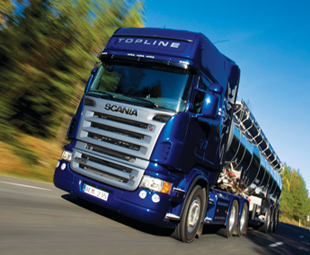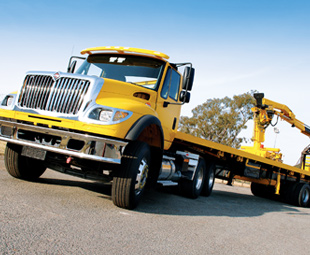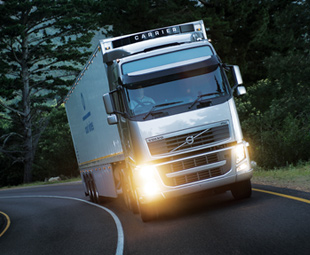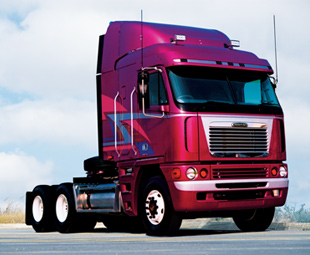Toughing out the local market

It’s been a tough year for the extra-heavy commercial vehicle segment, particularly when we consider the phenomenal growth of this sector throughout 2007/8. NADINE VON MOLTKE puts the extra heavies of 2009 into perspective.
It’s hard to believe that a mere year ago it was the extra-heavy commercial vehicle (XHCV) segment whose sales provided relief for the medium and heavy commercial vehicle sales slump.
Amid continuing infrastructural developments throughout 2008, the extra-heavy market bucked negative trends and was expected to continue to do so. Even as late as November 2008, when the rest of the market was already showing signs of serious strain, XHCV sales made up 40% of the market, 5% more than medium commercial sales, and double that of heavy commercial vehicle sales.
 Manufacturers were identifying the extra-heavy segment as ideal for growth opportunities, and all round XHCVs looked like a safe economic bet. The only real question in late 2008 was how competitive the market was. With only a handful of manufacturers traditionally dominating this market, did new entrants really stand a chance of being truly competitive in this segment?
Manufacturers were identifying the extra-heavy segment as ideal for growth opportunities, and all round XHCVs looked like a safe economic bet. The only real question in late 2008 was how competitive the market was. With only a handful of manufacturers traditionally dominating this market, did new entrants really stand a chance of being truly competitive in this segment?
No-one imagined what was about to happen. In early 2009 ABSA’s Commercial Asset Finance division announced that it would henceforth be dramatically restricting commercial vehicle financing activities, a move that was not isolated from the local financing community. Access to credit was suddenly severely limited, and the sector that was to feel the brunt of this development was the XHCV market.
“The commercial vehicle industry has been really tough over the past year, particularly the extra-heavy vehicle market,” says John Barnett, dealer development manger for Southern Africa at Navistar International Trucks Southern Africa.
“The main problem in this segment has been a lack of finance,” he explains. “Extra-heavy vehicles are of course in the most expensive bracket in terms of truck pricing, and therefore the hardest for which to secure financing. The demand for extra-heavy trucks has continued to be there, but the finance is not.”
The result is a market down almost 50% year-to-date, with a partial recovery only expected in 2010. “September’s sales showed improvement for the first time since the drop in sales began, but one month does not equate to a trend,” says Barnett. “Things will hopefully begin improving soon, but it will be a slow improvement as we wait for banks to begin loosening up on finance restrictions.”
Anders Lindblad, president of Volvo Trucks Southern Africa, believes there will be a partial recovery in the XHCV market next year in line with the commodities market showing signs of improvement.
“As mining begins to pick up, so too will the exports and commodities markets,” he elaborates. “The day-to-day local retail market has remained strong, but low-bed transportation has had a very tough time. Once this begins to pick up, truck sales should naturally follow.”
Lindblad does however warn that recovery in South Africa is expected to be slower than in the rest of the Sub-Saharan region. “Our neighbouring countries are experiencing a boom in mineral and mining developments,” he explains. “This growth in raw resources naturally translates into a growth in the local transportation markets, which means more trucks – particularly extra-heavy vehicles.”
But what does this all mean to the local XHCV market, other than scary new vehicle sales statistics?
Extra-heavy decisions
For the first time this year, Scott Byers’ survey determining the finalists and subsequent winners of the annual FOCUS on Excellence Awards included a questionnaire on why operators chose certain manufacturers in the various categories, based on what they felt were important factors influencing their acquisition of trucks.
The results for the XHCV segment are particularly telling, as they give us insight into what factors are clearly more important than others when it comes to vehicle selection.
The most surprising result is price which, at 4.06%, is ninth on the list of most important factors influencing the acquisition of an extra-heavy vehicle. A lack of finance might be hampering sales but, for those who are buying these trucks, price is nowhere near the most important consideration.
“Most people think that because we are in a recession, companies are obsessed with reducing their capital spend. It would appear however, that in the commercial vehicle segment, the focus is rather on spending money more efficiently, owing to the critical importance of the operational productivity of these assets. Thus factors such as reliability and after-sales service are of greater importance when considering which commercial vehicle brands are to be bought,” comments Chris de Kock, executive head of sales and marketing at WesBank.
The three areas clearly of the most importance to operators are CPK (cost per kilometre) at 17.14%, reliability at 16.5% and after-sales service at 14.7%. Brand loyalty, product quality, parts availability and value for money come in at fourth, fifth, sixth and seventh position respectively.
According to Brand Pretorius, CEO of McCarthy Group Limited, survival in the current economic climate requires a company to be lean and mean, with a strong emphasis placed on financial discipline.
If we compare this statement to the world of transport operators, where cost per kilometre determines a company’s expenditure and profit margins, keeping overall costs down and being as efficient as possible are vitally important.
 Capital expenditure represents a significant cost to operators, but it is still only one factor among many in the day-to-day operations of a transport company. Fuel efficiency, service intervals, tyre maintenance, reliability of a product, workshop efficiency, parts availability and pricing, not to mention how a truck is driven, all play a role in CPK. Manufacturers who can guarantee low CPKs by focusing on or assisting operators with all of the above will naturally have the upper hand.
Capital expenditure represents a significant cost to operators, but it is still only one factor among many in the day-to-day operations of a transport company. Fuel efficiency, service intervals, tyre maintenance, reliability of a product, workshop efficiency, parts availability and pricing, not to mention how a truck is driven, all play a role in CPK. Manufacturers who can guarantee low CPKs by focusing on or assisting operators with all of the above will naturally have the upper hand.
“There has been a strong decline in business confidence,” says Pretorius, “but things will get better. The decline has been U-shaped, not V-shaped. Right now we are scraping along the bottom, but things are not getting worse. There will be an upturn, and we need to be prepared for it when it arrives.”
Once again, if we equate this sentiment to transport operators, their focus should be on survival, and getting through these challenging times in one piece so that they can benefit from future growth in the market.
In the world of trucking, this means focusing on the reliability of vehicles and manufacturers to deliver on promises; a reliance on strong after-sales service, vital to keeping trucks on the road; product quality and parts availability; and, of course, brand loyalty, because tough times are weathered through supporting one another, manufacturers, dealers and operators alike.
The manufacturers who are able to deliver on these areas should find not only increased brand loyalty when the market swings up again, but increased market share when financial barriers are relaxed and operators look to once again extend or renew their fleets.
One thing is certain: extra heavies cater to a unique sector of the market and, while things are understandably tough at the moment, there is a light at the end of the tunnel.
Published by
Focus on Transport
focusmagsa




